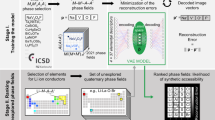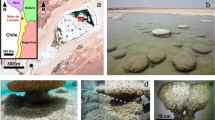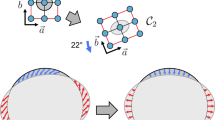Abstract
MINERALS belonging to quite different species, for example, rutile and mica, often show definite geometrical associations. Experimental overgrowths of salts and other chemical compounds on crystalline matter such as gypsum cleavages have been investigated by a number of authors1. Consideration is generally given to superposition of the two lattices at the connexion surface of the two associated crystals2. Agreement between the lattice plane of the deposit and the lattice plane of the substratum is not always satisfactory.
This is a preview of subscription content, access via your institution
Access options
Subscribe to this journal
Receive 51 print issues and online access
$199.00 per year
only $3.90 per issue
Buy this article
- Purchase on SpringerLink
- Instant access to full article PDF
Prices may be subject to local taxes which are calculated during checkout
Similar content being viewed by others
References
Gruner, J. W., Amer. Mineral., 14, 227 (1929).
Royer, L., Bull. Soc. franc. Minéral., 51, 7 (1929).
Deicha, G., C.R. Acad. Sci., Paris, 223, 1155 (1946); 226, 412 (1948); Butt. Soc. franc. Minéral, 70, 177 and 318 (1947).
Experientia, 4, 67 (1948).
Author information
Authors and Affiliations
Rights and permissions
About this article
Cite this article
DEICHA, G. Structural Interpretation of Orientated Overgrowths in Crystallization. Nature 164, 68–69 (1949). https://doi.org/10.1038/164068b0
Issue date:
DOI: https://doi.org/10.1038/164068b0
This article is cited by
-
Über orientierte Aufwachsungen von Kristallen auf Talk und Kadmiumjodid
Experientia (1953)



